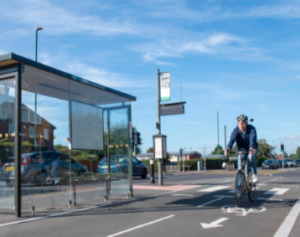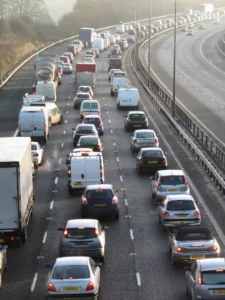Millions more school runs across the country can now be transformed to be healthier, safer, greener and more active, thanks to new government guidelines published this week.
The guidance, published by Active Travel England and the Department for Transport, outlines how councils can better deliver school street schemes, so that they work best for pupils and staff as well as local businesses and residents.
A School Street temporarily only allows motor traffic with a permit outside the school gates at pick up and drop off times. This creates a safer space for children and their families to walk, wheel, cycle or scoot to school, bringing a wealth of benefits to both school pupils and residents, including:
- improved physical and mental health for schoolchildren
- reduced cases of dangerous driving, parking and turning outside schools during school run times
- more children staying active by walking, wheeling or cycling to school, which in turn reduces traffic in the local area during school drop off and pick up
- more opportunities for social interactions on the way to school, and more independence for older pupils
- reduction in emissions around schools
There are already hundreds of School Streets funded across the country, including more than 180 funded by the government’s Active Travel Fund.
Read the new School Streets guidance.
The guidance also cites research and evidence from the Road Safety Trust, which shows these schemes increase active travel on the school run, are supported by most parents and residents in the nearby community, and do not cause significant road safety issues through traffic displacement.
It comes after recent research commissioned by ATE found that 85% of people in England support active travel and would like to do more, while data from charity Sustrans has previously found that 4 out of 5 children want to walk or cycle to school.
National Active Travel Commissioner Chris Boardman said: “The majority of kids have told us they want to walk, wheel, scoot and cycle to school – it’s what they want, and it’s what we want for them. It is vital that we give them the opportunity to bookend their day in the classroom with fresh air and exercise, helping them build healthy travel habits for life.
“Through our new School Streets guidance, we will be able to better design activity into our neighbourhoods and help make life happier and healthier for future generations, all while reducing congestion on the roads during school run times for residents and businesses – it’s win-win for everyone.”
Local Transport Minister Simon Lightwood said: “It’s crucial that children are able to enjoy the physical and mental health benefits that come with walking, cycling or scooting to schools.
“Today’s new School Streets guidance will help embed active travel at the heart of our neighbourhoods, so that children, parents, and local residents can all benefit from cleaner air, less congestion, and healthier journeys to school.”
Chris Boardman has this week shared the School Streets guidance with a global audience at the COP29 climate conference in Baku, Azerbaijan, where he also outlined ATE’s wider work helping councils to provide environmentally friendly active travel options for their communities, through targeted investment and expert training.
PIC:.GOV.UK






















